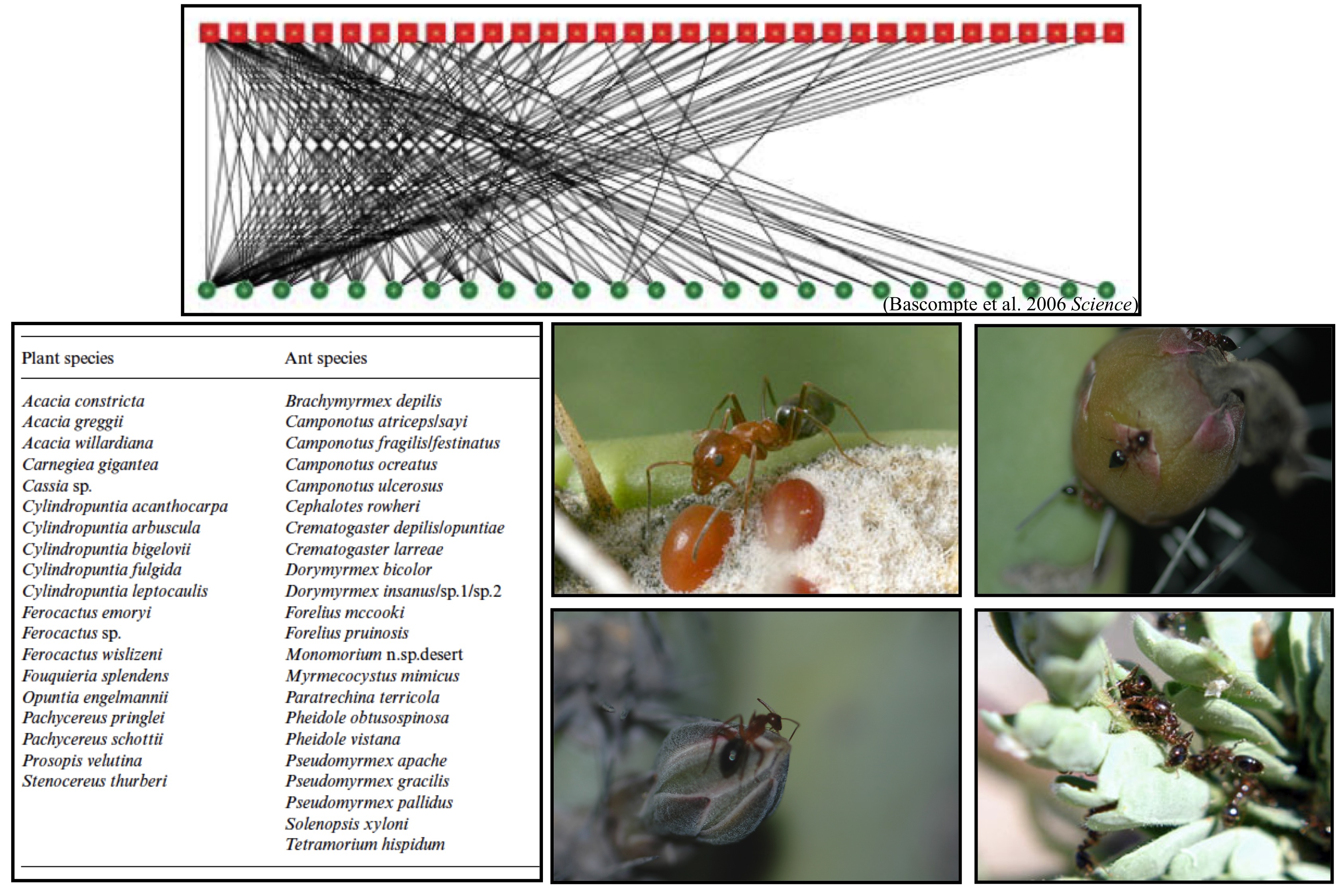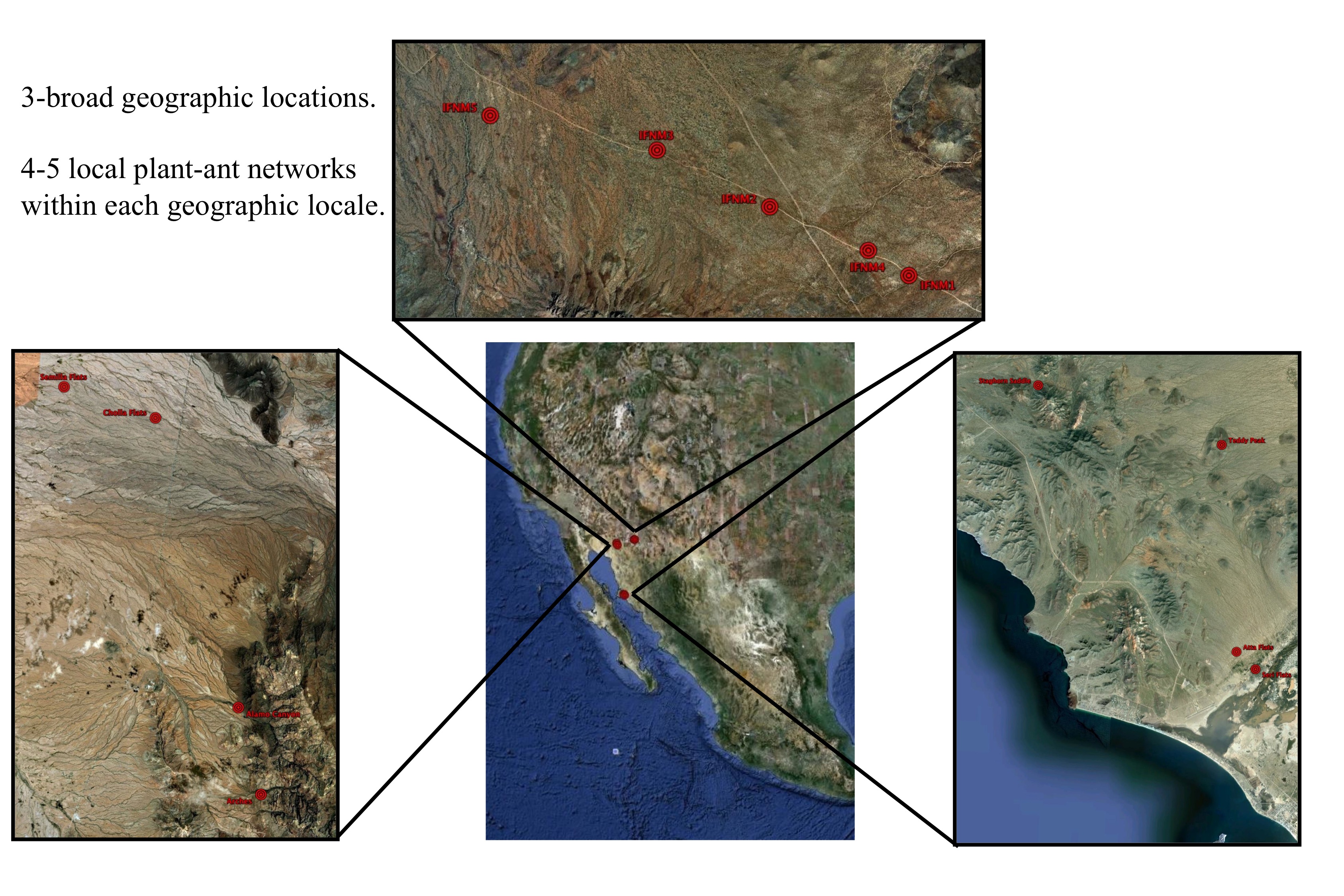Mutualistic Plant-Ant Networks
Plant-Ant Networks in the Sonoran Desert:
Integration of mutualistic interactions into food webs and mainstream community ecology has been slow to come, largely due to the lack of general mechanistic theory for the dynamics of mutualistic interactions at the pairwise population level, as well as a general means with which to describe communities of mutualistic interactions, like that of a food web for predator-prey interactions. Consumer-resource theory provides a mechanism for the dynamics of mutualistic interactions within communities. In turn, network theory provides a general means with which to describe interactions (edges) among species (nodes) comprising mutualistic communities (networks), food webs, and biological communities in general. Network theory for mutualistic communities has now been applied to plant-pollinator, plant-seed disperser, plant-ant, cleaner-client fishes, and anemonefish-sea anemone interactions. Such bi-partite mutualistic networks are simply two trophic-level food webs of consumer-resource interactions between mutualistic species. I am currently studying mutualistic plant-ant networks mediated by plant production of extrafloral nectar (EFN) resources that attract and reward consumer ants in exchange for their defense against natural enemies of the plants.

Mutualistic Plant-Ant Networks across Landscapes within a Desert Biome:
I have recently collected a spatial data set of 13 plant-ant networks throughout the Sonoran Desert, with a statistical design to account for errors in estimating nodes, edges and weighted edges of ecological networks. These 13 plant-ant networks include 4-5 local networks at each of three broad geographic regions, which I am using to examine local, regional, and broad geographic variation in network structural properties of mutualistic communities.
